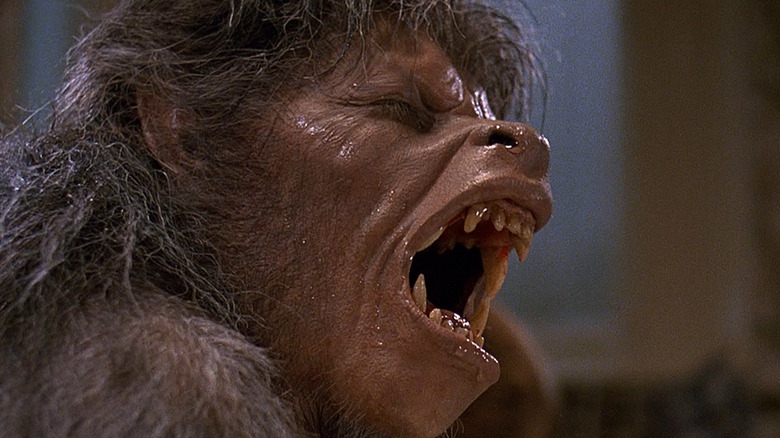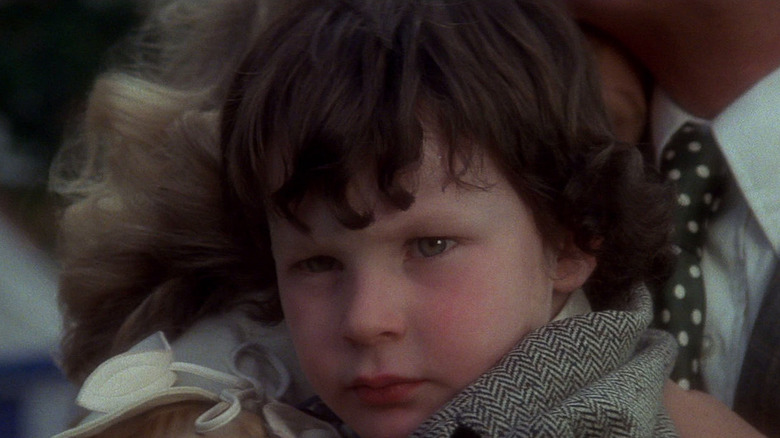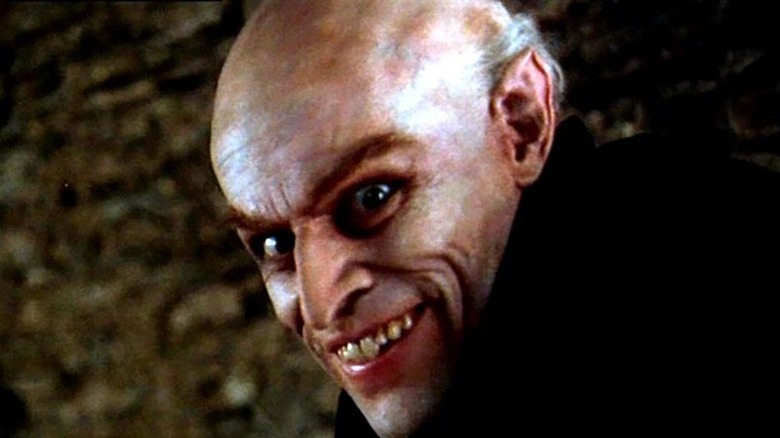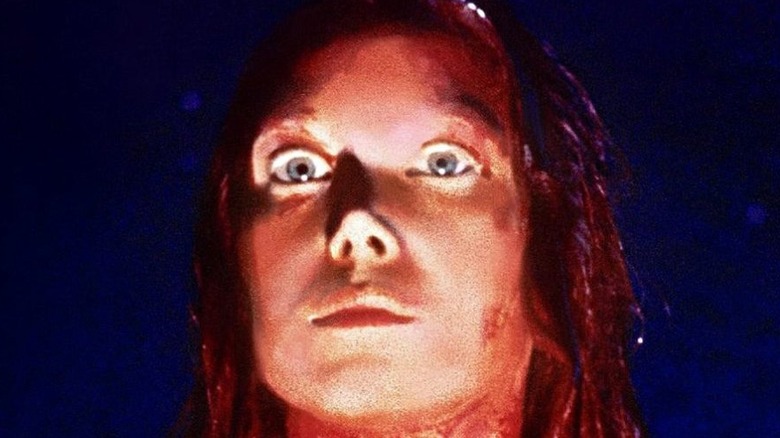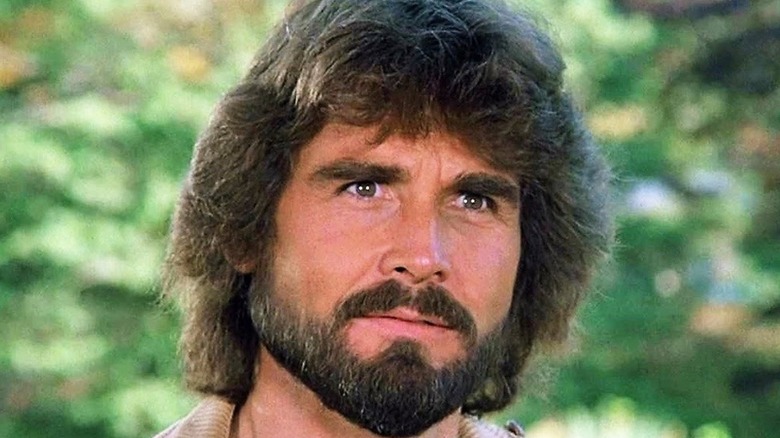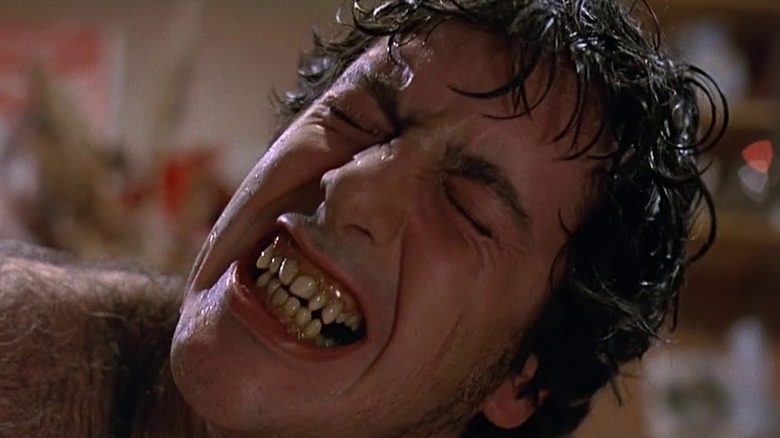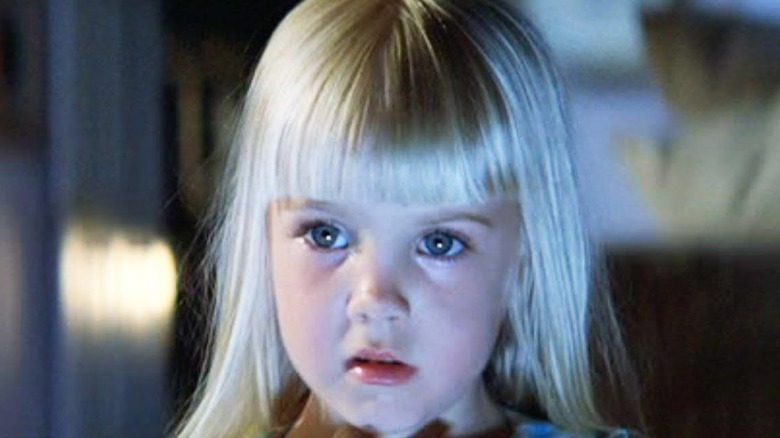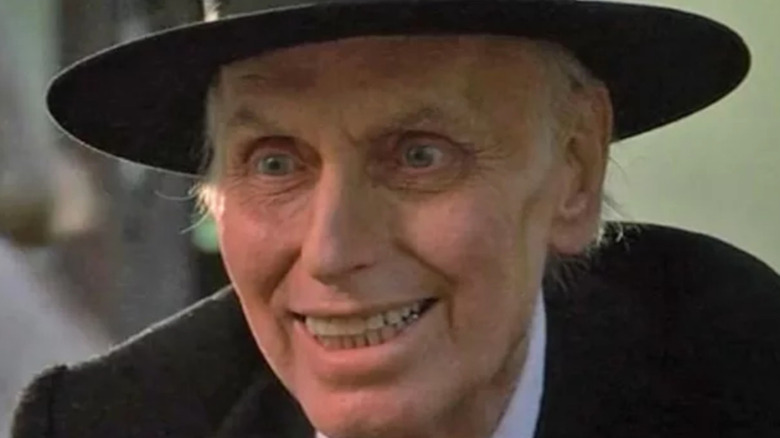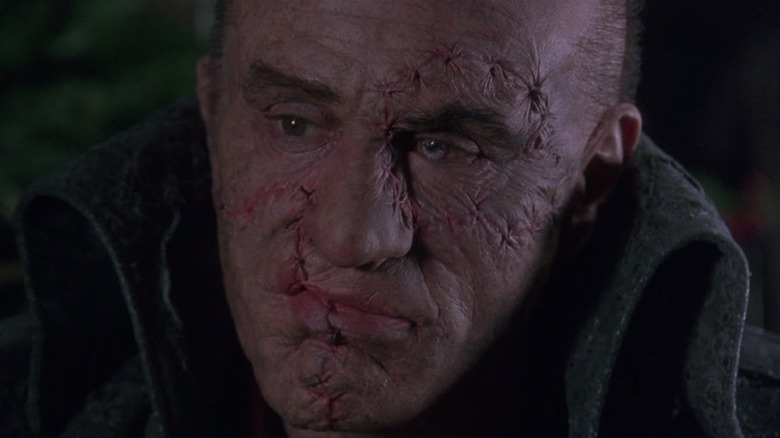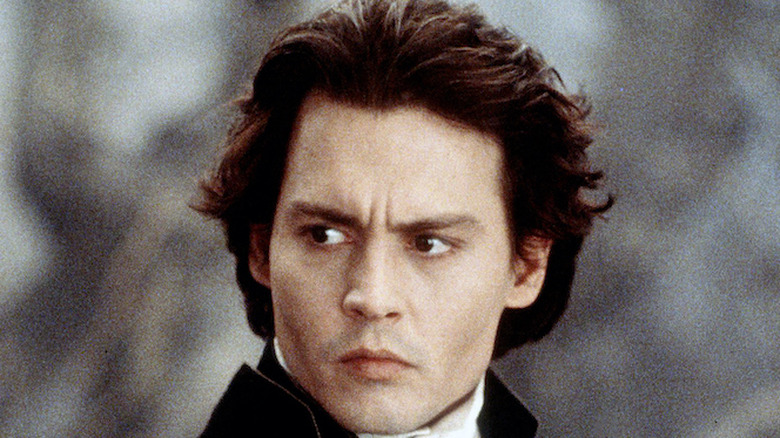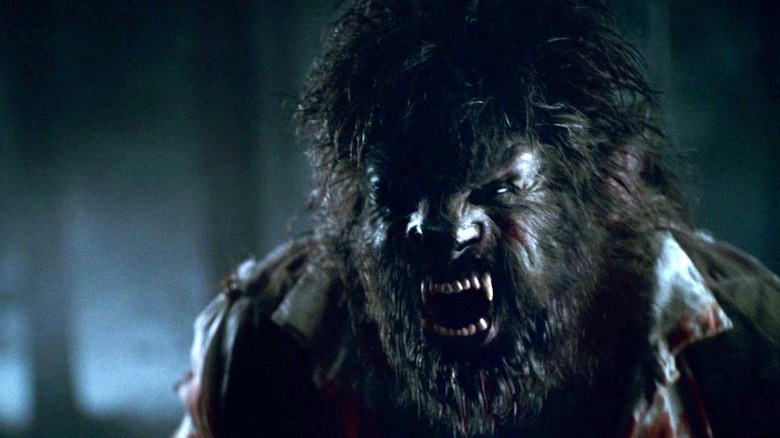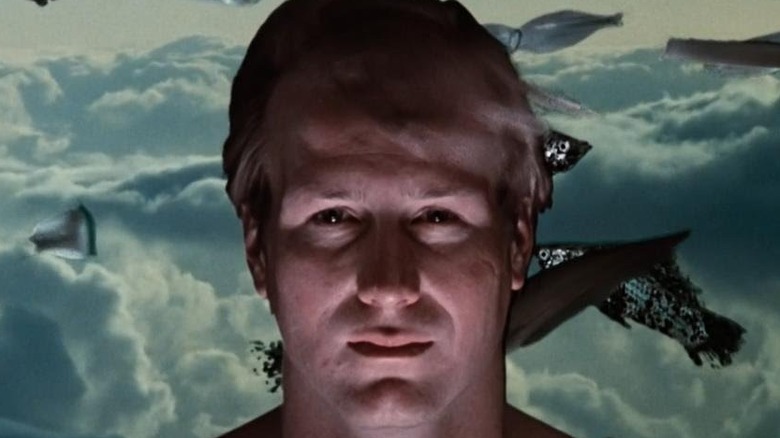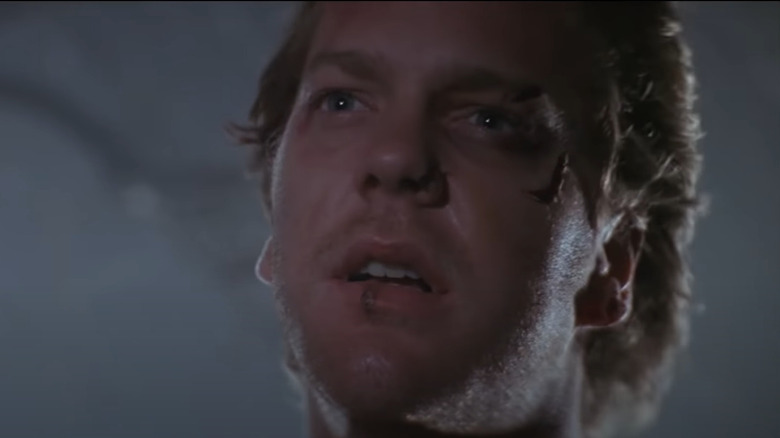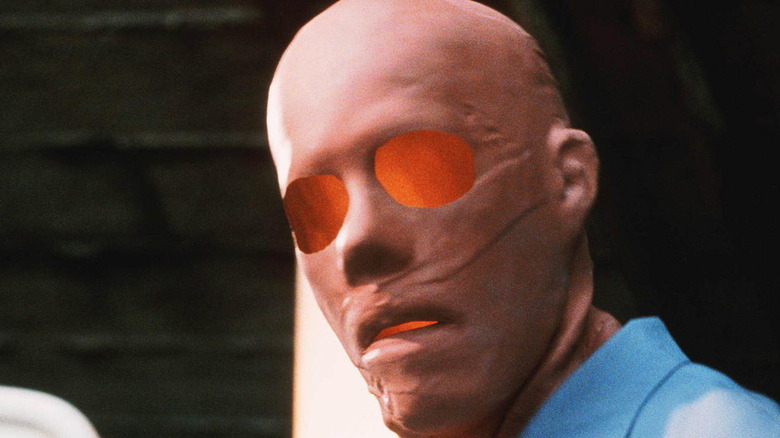Horror Movies You Forgot Were Nominated For Oscars
The horror genre isn't generally considered high-brow stuff by pop culture fans, or the film industry as a whole. Even most hardcore horror enthusiasts will admit that the vast majority of films in the genre shouldn't be considered "art," at least not in the academic sense. It's easy to see why; films riddled with exploding heads, inside-out guts and nightmarish monsters isn't typically the sort of pensive, truth-exploring material pegged for awards and accolades.
Nevertheless, sometimes these low-brow limitations are transcended; sometimes, horror gives us a cinematic masterpiece. After all, isn't being scared for your life as human a feeling as love, tragedy or triumph?
Some beloved horror films come with a pedigree, adapted from important literary works like "Dracula" or "Frankenstein." Others come with scripts that make them modern classics, like "Pan's Labyrinth" or "Midsommar."
Typically, the Academy of Motion Picture Arts and Sciences gives love to dramas, historical biopics, and films about the film industry. But every so often, there's a horror movie the Academy simply can't ignore. Let's take a look at some of these, horror films that got rare nominations for (and in some cases, even won) Oscars.
The Omen (1976)
Following American diplomat Robert Thorn (Gregory Peck), his wife Katherine (Lee Remick), and their enfant terrible, Damien (Harvey Stephens), "The Omen" engrained itself in the nightmares of audiences with its "Final Destination"-style killings, as Robert sets out to discover the truth about his son — and naturally, learns that there are bigger and darker forces at work than just a lousy adoption agency.
What should have been a goofy little fright flick became a beloved horror classic, elevated by strong direction from Richard Donner, a compelling performance from the legendary Peck, and a truly terrifying score by Jerry Goldsmith. In fact, it's because of Goldsmith that "The Omen" got its Oscar; he garnered two nominations — for Best Original Score and Best Original Song — winning for the former.
Fun Fact: The song Goldsmith wrote for the film, "Ave Satani," is the only Best Original Song nominee that was written and performed in Latin.
Shadow of the Vampire (2000)
There's a longstanding urban legend that Max Schreck — who played Count Orlok in 1922's "Nosferatu" — was an actual vampire. This supposedly explains why his performance as the titular bloodsucker was so good, and why it was his only film. Problems arise in the story upon closer inspection, however; Schreck appeared in more than forty films throughout his career.
Nevertheless, it's a fun urban legend, and serves as the premise of "Shadow of the Vampire," which retells the making of "Nosferatu" as if the urban legend were true. Director F. W. Murnau (played by John Malkovich) is fine with letting a creature of the night (played by Willem Dafoe) star in his film, telling the cast and crew that Schreck prefers to show up to set in full makeup and shoot his scenes at night. Of course, complications arise when Schreck can't keep his fangs to himself and starts feasting on members of the production. But to Murnau the show must go on, so he refuses to let a little bloodletting get in the way of his picture.
While "Shadow of the Vampire" didn't perform exceptionally well at the box office, it did garner positive reviews and some Oscar love in the form of nominations for Best Makeup and Best Actor in a Supporting Role for Dafoe.
Carrie (1976)
Based on Stephen King's 1974 debut novel, "Carrie" tells the story of puberty run amok, centering on Carrie White (played by Sissy Spacek), an awkward teenager mocked at her high school, only to discover that she has telekinesis — the ability to move objects with her mind. Needless to say, this is bad news for anyone who gives her a hard time.
In addition to helping turn Stephen King into a household name, "Carrie" was a hit with audiences and critics alike. Brian De Palma's hazy, lingering high school horrors effectively turned teenage cruelty into a horror all its own, earning Spacek an Oscar nomination, her first. It announced a substantial career, as Spacek has since gone on to be nominated 5 additional times — winning once, for 1980's "The Coal Miner's Daughter."
Also earning an Oscar nomination for "Carrie" was future "Twin Peaks" star Piper Laurie, who earned a Best Supporting Actress nom for her role as the sympathetic Sue Snell.
The Amityville Horror (1979)
If "Best Beard" were an Oscar category, there's little doubt that James Brolin would've taken home a little gold statuette; regardless, "The Amityville Horror" still earned itself one Oscar nomination, albeit in a very different category. Based on Jay Anson's 1977 book detailing the supernatural experiences of the Lutz family (who bought a home in Amityville, New York, where a mass murder had taken place), the film casts Brolin and Margot Kidder as the Lutz couple, moving in to the haunted house.
"Houses don't have memories," says Brolin's character. But little does he realize that this particular house has the memory of an elephant, and an evil plan to go along with it. From scaring the hell out of the local priest to trapping a babysitter in a closet to bleeding from its walls, this is one home improvement project that not even Bob Vila could fix.
"The Amityville Horror" was a miss for critics, but was so financially successful that it spawned a whole series of even worse sequels, along with a 2005 Ryan Reynolds remake (yes, he also grew a robust beard for it). One of the few aspects of the film that was widely applauded was Lalo Schifrin's haunting score, which was nominated for an Oscar.
An American Werewolf in London (1981)
There are plenty of great horror-comedies out there, but few have been able to equal the intensity and humor of 1982's "An American Werewolf in London."
David Kessler (David Naughton) and Jack Goodman (Griffin Dunne) are two American college students, embarking on a walking tour of Britain, who wander a little too far into the moors and are attacked by a werewolf. David barely survives the attack, but Jack is mauled to death. But we haven't seen the last of Jack — who continues to haunt his old pal David.
Of course, David dismisses the visions of his dead friend, but is soon plagued by disturbing nightmares. Considering he and his friend were attacked by a werewolf, this would be understandable except that his nightmares always tend to be about violent monsters slaughtering any living thing they encounter. Anyway, a full moon happens and David turns into werewolf, killing a veritable baker's dozen of English folk.
A box office success and critical hit, "An American Werewolf in London" wasn't just loved for its blend of scares and laughs; the makeup effects for the film were so influential that the Academy of Motion Picture Arts and Sciences created a whole new category, Best Makeup, which went to Rick Baker's amazing work. While the werewolf transformation effects are a standout, another noteworthy effect is that of Jack's specter, who appears more and more decrepit throughout the film in one of its most clever gags.
Poltergeist (1982)
"Poltergeist" was the first half of what turned out to be a big summer for Steven Spielberg (who produced, co-wrote, and reportedly secretly directed the film), with "E.T. the Extra-Terrestrial" being the second. Released only a week apart, both films were massive hits and further established Spielberg as Hollywood's go-to guy for crowd-pleasing blockbusters.
"Poltergeist" follows a suburban family newly moved into a new house, subjected to a slew of terrifying experiences — including objects moving by themselves, a tree that comes alive and attacks the son, a swimming pool filled with corpses, and much more. While there are scares and special effects aplenty in "Poltergeist," because this is a Spielberg film (more or less), the audience builds an affection for the family, and there is no shortage of saccharine scenes to balance out the more terrifying ones.
With the amount of talent that went into pulling off such a spectacle of a film, it's no wonder it got three nominations: Best Original Score, Best Sound Effects Editing, and Best Visual Effects. Fun fact: "Poltergeist" lost two of these awards to "E.T."
Poltergeist II: The Other Side (1986)
While 1986's "Poltergeist II: The Other Side” lacked the talents of its predecessor (Spielberg and director Tobe Hooper had moved on), it did still earn itself an Oscar nom.
This time around, the family from the previous installment relocated to Phoenix, Arizona — but their problems followed them. Their old house turned out to be the meeting place for an apocalyptic cult in the 1800s led by Rev. Henry Kane, so evil that he survived death to become the beast that attacked the family at their home in "Poltergeist." Now he's back once again in human form, and has some dark, otherworldly plans for Carol Anne.
"Poltergeist II: The Other Side” took a more intense turn, bolstered by quality visual effects for the period (with considerable help from beloved surrealist H. R. Giger) that were good enough to earn an Oscar nomination. This group — consisting of Richard Edlund, John Bruno, Garry Waller and Bill Neil — ultimately did not take the gold, instead having to settle for scaring audiences across the nation half to death.
Mary Shelley's Frankenstein (1994)
Francis Ford Coppola had a hit on his hands with 1992's "Bram Stoker's Dracula," a fairly faithful adaptation of the classic novel, so he decided to follow it up with another equally faithful version of "Frankenstein"; or, "The Modern Prometheus." This time serving in a producing role, Coppola handed the directorial reins to Kenneth Branagh which ... may not have been the greatest idea.
Sticking fairly close to the source material, "Mary Shelley's Frankenstein" tells the story of Victor Frankenstein (played by Branagh) who in turn tells his story about growing up in Geneva, being a model student, and falling in love with his stepsister (no it's not that kind of movie, fellas). Anyway, while in university Frankenstein decides to pursue a way to cheat death, and when his professor dies, he swipes his notes and stitches the body parts of corpses together to create new life.
However, because Frankenstein didn't think a human jigsaw puzzle would be so hideous, he abandons his creation (played by Robert De Niro) and sends it off to die alone. Bad move, Franky. As it turns out, the monster was able to survive and swore revenge against his maker by ruthlessly killing off everyone he loves.
Despite a respect for Shelley's 1818 novel, the film was heavily panned for its frantic direction and tonal inconsistency. But it wasn't without some recognition; De Niro was lauded for his stirring performance, and the Academy gave it some love in the form of a nomination for Best Makeup.
Sleepy Hollow (1997)
Another modern(-ish) adaptation of a classic story is Tim Burton's "Sleepy Hollow," starring his go-to guy Johnny Depp as Ichabod Crane. In this version, Crane is a police detective (and not a school teacher like in the original source material) sent from New York City to the sleepy town of Sleepy Hollow to investigate a series of grisly murders.
The film borrows elements of the whodunnit genre, as Crane delves deeper into the bizarre secrets of the town, completely dismissing the town council's claims that the one behind the murders is a Hessian horseman (played by Christopher Walken), whose head was chopped off years earlier during the American Revolutionary War. Crane is a firm believer in rationality and reality, and thinks that the tale of the Headless Horseman is merely small-town superstition. But because this is a horror movie, Crane is forced to believe in the supernatural when he comes face to face (as it were) with the black magic jockey from hell, and sets out to discover why he's so angry at other people's heads.
A critical and financial hit, "Sleepy Hollow" was praised for its performances, haunting atmosphere, and unique aesthetic. In fact, it was the film's visual elements that were singled out for Oscar love, garnering nominations for Best Cinematography and Best Costume Design, and winning for Best Art Direction.
The Wolfman (2010)
A remake of the classic 1941 Universal Monsters flick, "The Wolfman" stars Benicio del Toro, Anthony Hopkins, Emily Blunt, and Hugo Weaving. The film takes place in 1891 and follows Lawrence Talbot, who returns to his family estate to uncover the mysterious and brutal murder of his brother Ben, said to have been committed by a legendary savage creature. However, during his quest to discover who killed his brother, as well as who's been viciously knocking off locals, Lawrence is bitten on the neck by a werewolf.
Inspector Francis Aberline of Scotland Yard has also been investigating the murders and suspects Lawrence based on his history in a mental institution. His suspicions couldn't be more correct. As expected, it wasn't rabies that Lawrence got from the werewolf, but rather lycanthropy; he's become a werewolf cursed with the insatiable urge to munch on anyone who happens to be out and about during a full moon. This being set in London, there's never a shortage of snacks walking around at night, so plenty of bloody carnage takes place.
Despite a stellar cast, "The Wolfman" never quite rose above being a generic monster-on-the-loose creature feature, and was a flop with critics and audiences alike. However, its inclusion on this list is because of legendary makeup effects artist Rick Baker, who appears again for a werewolf movie — winning the most recent of his seven Oscars. With "An American Werewolf in London" having earned his first win, it's kind of sweet that werewolf movies bookend Baker's collection of Oscars.
Altered States (1980)
Helmed by eccentric director Ken Russell and based on the eponymous novel by playwright/screenwriter Paddy Chayefsky, "Altered States" follows psychopathologist Edward Jessup as he experiments with sensory deprivation in a flotation tank to explore other states of consciousness. After a wild trip (in both the geographic and drug sense) in Mexico, Edward returns to the U.S. with a sample of the sacred potion he ingested as part of a ritual with the Hinchi tribe, using it to intensify experiences with his consciousness.
Since this is a sci-fi body horror flick, don't expect Edward's experiments to go smoothly — with him simply taking notes and publishing them in a journal. No, Edward instead combines use of the drug with that of the sensory deprivation tank, experiences kaleidoscopic hallucinations of the origins of the human species, and begins to undergo physical biological devolution. That's right, he turns into a little caveman who goes on a little rampage in the city, and his condition only continues to regress into a weird, pre-human entity.
"Altered States" is some psychedelic stuff, crammed with all kinds of bizarre and unnerving images and sounds. It was this sonic side of the film that got the most industry love, as John Corigliano was nominated for Best Original Score and Arthur Piantadosi, Les Fresholtz, Michael Minkler and Willie D. Burton were nominated for Best Sound.
Flatliners (1990)
"Flatliners" is a psychological horror film that follows Nelson Wright, a medical student who convinces four of his classmates to join him in discovering what lies beyond death. They reluctantly agree to participate, and so Nelson experiences clinical death for one minute, during which he endures a painful memory from his past. However, once he's resuscitated by his friends, Nelson tells them that there is something there that he can't describe, but it feels comforting.
Because it's basically against the law for main characters to make smart choices in horror movies, Nelson's friends decide to join him and take a crack at being dead for a minute to see what's on the other side. As expected, it's not the pearly gates, or even hell for that matter. Nah, what's waiting for each of these characters are traumatic experiences from their pasts that continue to haunt them even after they've been brought back to the land of the living.
"Flatliners" was a minor hit when it first played in theaters, but a cool premise and an impressive cast (including Kiefer Sutherland, Julia Roberts, William Baldwin, Oliver Platt, and Kevin Bacon) still wasn't enough to gain much adoration from critics. However, it did get some Oscar attention in the form of a nomination for Best Sound Editing, and the film has since gone on to become a cult favorite.
Hollow Man (2000)
With a resume that includes such movies as "Robocop," "Total Recall," and "Showgirls," director Paul Verhoeven isn't exactly known for embracing subtlety in his work, and "Hollow Man" is no different.
This violent sci-fi horror flick stars Kevin Bacon as the arrogant yet brilliant scientist Sebastian Caine, who has developed a serum for the military that can make someone invisible. After a successful test of turning a gorilla invisible and then returning it to normal, Sebastian of course decides it's time to head straight to human trials with himself as the first guinea pig, like a proper mad scientist. While invisible, Sebastian enjoys pranking his coworkers around the lab, which goes too far when he gropes one of his female colleagues.
When the attempt to bring him back to visibility fails, Sebastian is quarantined until a cure can be found. However, this does nothing for his dwindling sanity, so he starts sneaking out and wreaking even more havoc. In true evil genius fashion, Sebastian becomes so obsessed with his new invisible form that he kills anyone who tries to stop him or restore his visibility.
"Hollow Man" was a hit when it came out, grossing $190,213,455 worldwide against a $95 million budget, but wasn't particularly well-received by critics (the film has a 27% score on Rotten Tomatoes). However, one aspect of the film that was highly praised was its use of innovative visual effects in bringing an invisible character to life and having them interact with the world in a way that hadn't been seen (pun intended) before. Luckily, the efforts of the effects team weren't invisible to the Academy, who gave them a nomination for Best Visual Effects.
